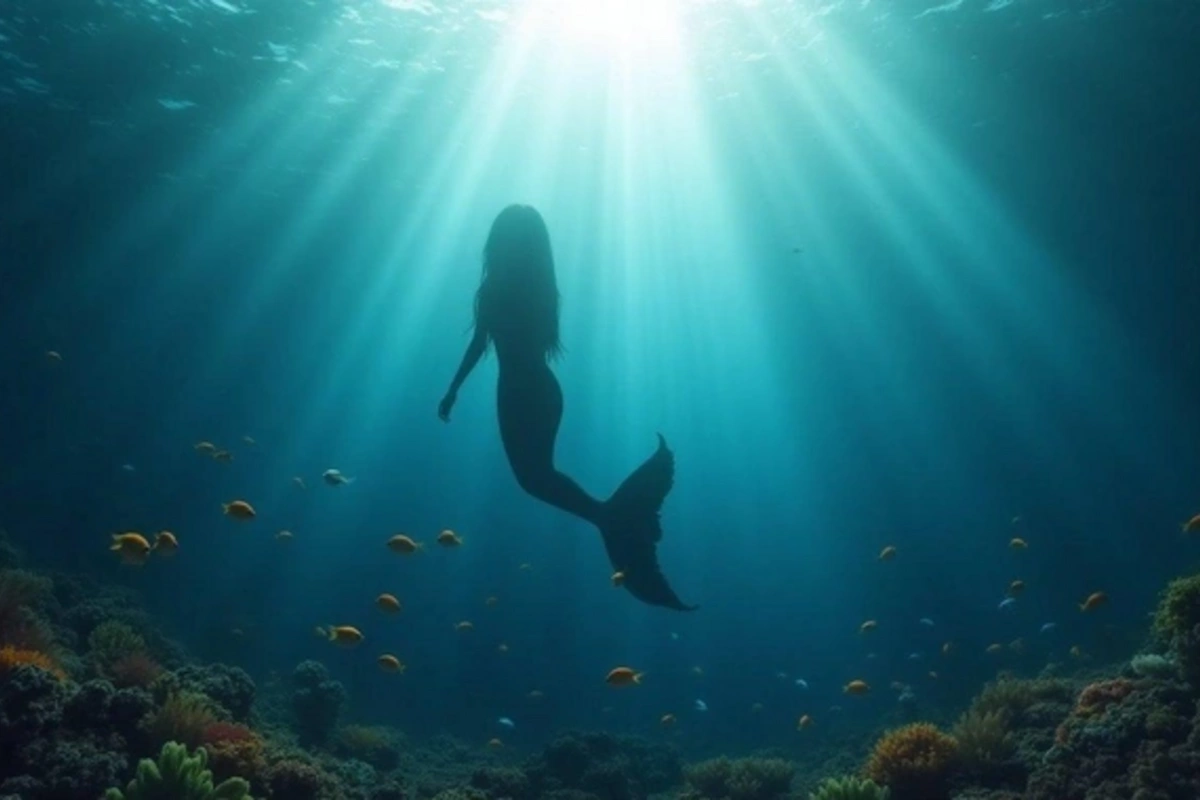03 Jun , 11:29
0

THE MYSTERY OF THE OCEAN DEPTHS: DO MERMAIDS REALLY EXIST?
Who among us didn't dream of meeting a real mermaid in childhood? These mysterious creatures with a fish tail and human torso have been stirring people's imagination around the world for centuries. But what if there's something more behind the beautiful fairy tales? Let's embark on a fascinating journey and try to solve one of humanity's most ancient mysteries.
Legends about mermaids appeared long before Hans Christian Andersen wrote his famous fairy tale. The first mentions of sea maidens are found in Assyrian texts dating back to 1000 BC. Ancient Greeks told stories about sirens who lured sailors onto sharp rocks with their singing.
Interestingly, similar creatures exist in the folklore of virtually all peoples with access to the sea. Slavs have rusalki and vodyanitsy, Scandinavians have margygr, Japanese have ningyo, and African tribes have mami wata. Could this just be a coincidence?
Curious fact: In medieval Europe, the existence of mermaids was considered a scientifically proven fact. Their images adorned geographical maps alongside real animals.
Modern scientists approach the question of mermaids' existence with a considerable degree of skepticism, but that doesn't mean they completely dismiss the topic. Researchers put forward several interesting theories explaining the ubiquity of myths about sea people.
Some anthropologists suggest that legends about mermaids might be echoes of our evolutionary past. According to the "aquatic theory of evolution," human ancestors lived in coastal waters for some time, which explains many features of our structure: the absence of thick fur, the ability to hold our breath, and the structure of our nose.
Many "encounters with mermaids" can be explained by observations of real marine animals in poor visibility conditions. Manatees, dugongs, and seals from a distance can indeed resemble humanoid creatures, especially when they rise from the water or feed their young.
The sea has always been a source of mystery and fear for humans. Perhaps the images of mermaids are a way for our subconscious to personify the unpredictable sea element, to make it more understandable and "human."
Even in the 21st century, reports of encounters with mysterious sea creatures regularly surface. In 2012, the National Ocean Service (USA) even issued an official statement denying the existence of mermaids, which only fueled public interest.
Interesting cases in recent years:
Let's approach the question from a biological perspective. Could evolution have created an intelligent creature adapted to life in water?
The image of the mermaid continues to evolve. If earlier they were dangerous seductresses, today they more often appear as protectors of the ocean or romantic heroines. Movies, books, anime - mermaids have firmly established themselves in pop culture.
Modern interpretations:
While scientists have not found irrefutable evidence of mermaids' existence, we can state several facts:
Known for certain:
Modern technologies open new possibilities for ocean exploration. Underwater drones, satellite observation, sonar - all this can help uncover the secrets of the ocean depths.
Promising search directions:
Perhaps the issue is not whether mermaids actually exist, but why we are so attracted to this idea. The sea symbolizes the unknown, the mysterious, the primordial. Mermaids embody our dream of harmony with